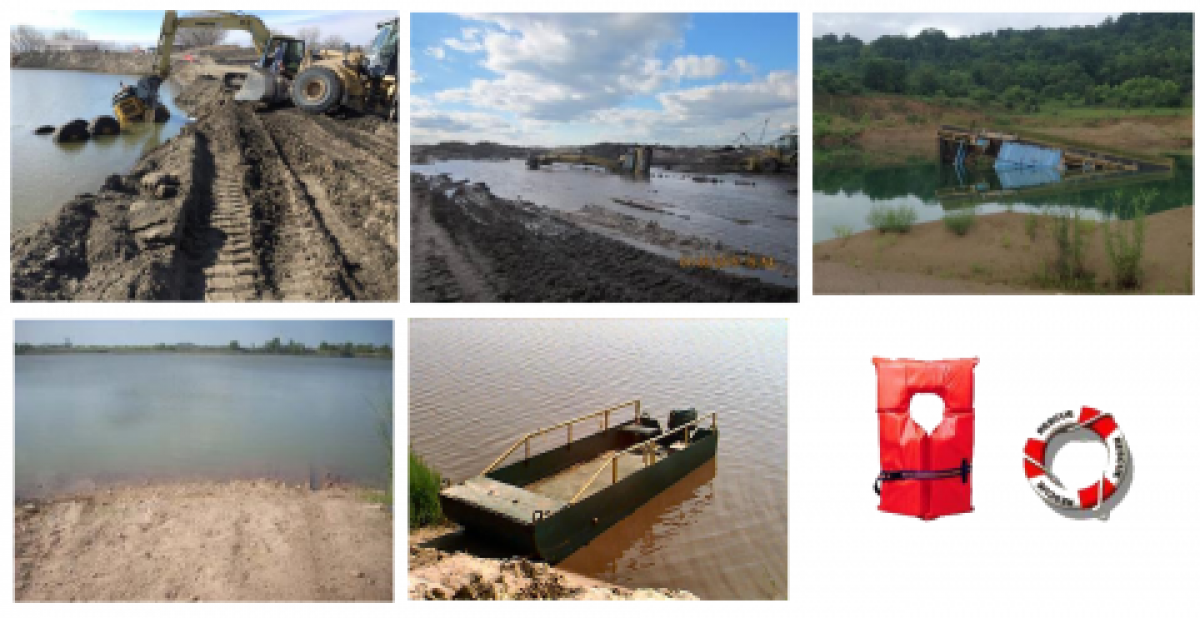Hazard Alert: Best Practices for Working Near Water
There have been 24 water related fatalities in Metal and Nonmetal since 2005.
The hazardous outcomes of working near water are clear – entrapment and drowning.
There are a number of risk factors that are intensified when water is involved:
- Equipment weight and vibration
- Undercut banks
- Sloughing ground
- Varied water depth
- Swift currents
- Inadequate berms
- Narrow roadways
- Electrocution
Follow Best Practices to Prevent Accidents
- Conduct daily workplace examinations.
- Know the water depth and subsurface conditions and ground conditions before you begin work.
- Keep equipment a safe distance back from the water’s edge.
- Avoid traveling over ice covered water.
- Provide handrails around docks and work boats.
- Properly berm roadways near water hazards.
- Always wear a Coast Guard approved Type I or Type V personal flotation device (PFD) when working around water, even when inside mobile equipment. Auto-inflatable, if possible.
- Keep water rescue equipment easily accessible.
- Know where extra PFDs and rescue rings are stowed.
- Practice good housekeeping and keep all travel ways clear around water hazards.
Download this Alert

